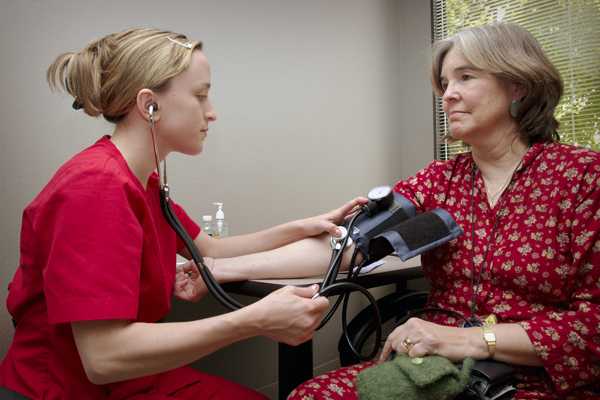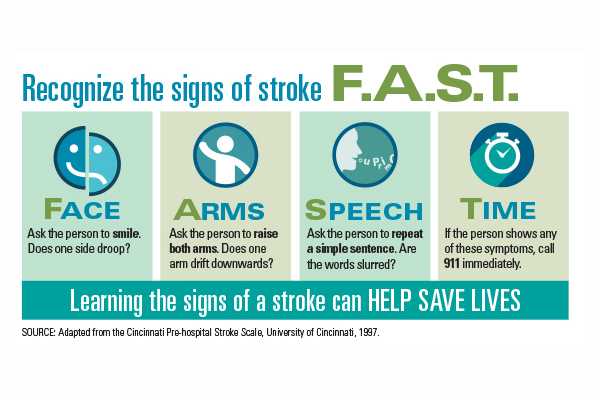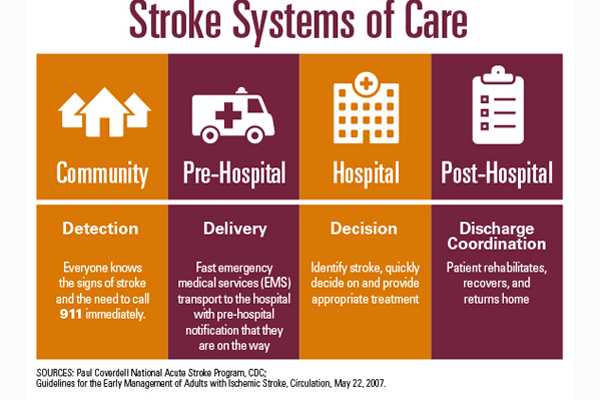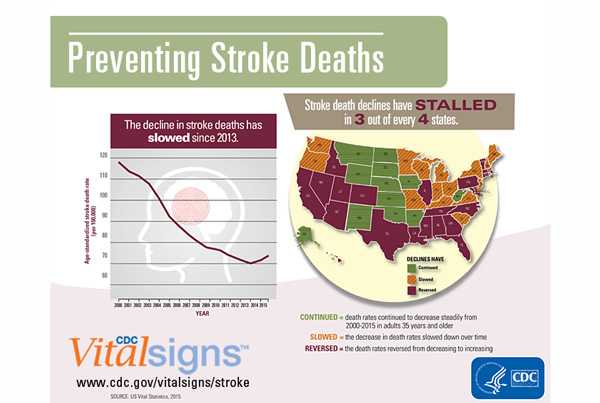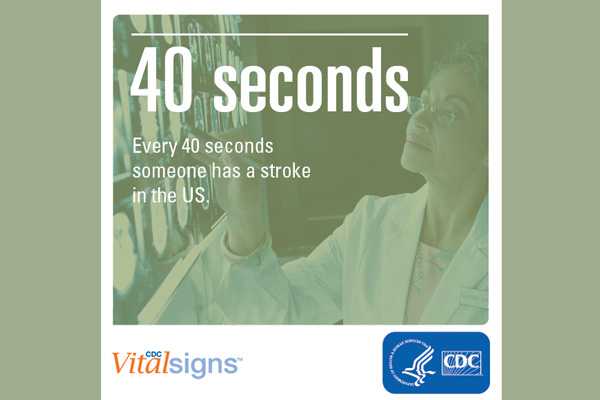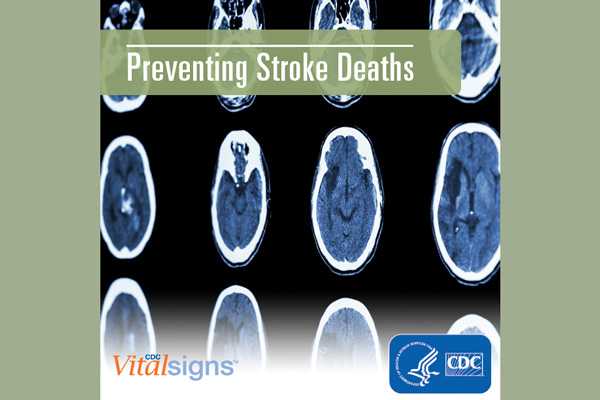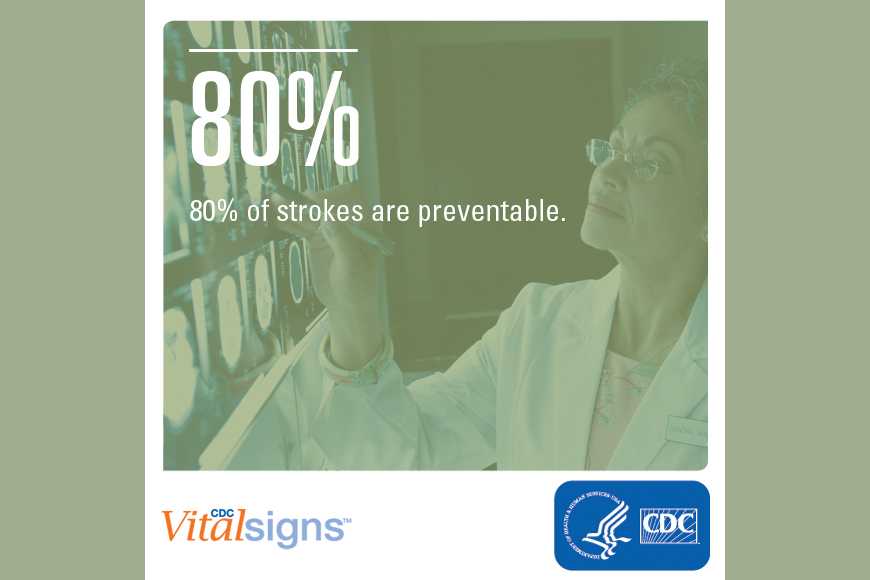Preventing stroke deaths
After decades of decline, progress has slowed in preventing stroke deaths. Not only has progress in preventing deaths slowed, but there has also been an increase in stroke death rates among Hispanics and among people living in the South, while blacks continue to be the hardest hit by stroke.
This Vital Signs examines trends in stroke deaths in the U.S. from 2000-2015 by age, sex, race/ethnicity and geographic area. Although this report does not specifically address the reasons behind the slowdown in progress, other studies point to increased prevalence of obesity and diabetes, as contributors.
Key findings in the Vital Signs report include:
- After decades of steady decline, the progress in preventing stroke deaths has slowed.
- Stroke death rates increased among Hispanics by 6 percent each year from 2013 to 2015; and blacks continue to be the hardest hit by stroke deaths.
- About 3 out of every 4 states showed a slowing down in the rate of decline from 2000 through 2015.
Almost 800,000 people have a stroke each year, approximately 140,000 die and many survivors face disability. This is disturbing because about 80% are preventable. High blood pressure is the most important treatable risk factor for stroke. Preventing, diagnosing, and controlling it through lifestyle changes and medicine is critical to reducing strokes. Health systems (hospitals, doctors, and other healthcare professionals) can help address stroke risk factors and improve patient outcomes if a stroke occurs.
Stroke is an emergency. When stroke happens, minutes count. Call 9-1-1 right away. Stroke patients have better outcomes if they get to the hospital in time. Reducing stroke risk factors and improving stroke systems of care are needed to continue the decline in stroke deaths.
Contact Information
CDC Media Relations
(404) 639-3286
media@cdc.gov
Factsheet:
English [PDF 2.0 MB](https://www.cdc.gov/vitalsigns/pdf/2017-09-vitalsigns.pdf)
Spanish [PDF 2.0 MB](https://www.cdc.gov/spanish/signosvitales/pdf/2017-09-vitalsigns.pdf)
Rob Merritt, MA

“We must double our efforts to reduce stroke risk factors and improve the quality of stroke care to accelerate and maintain the decline in stroke deaths.”
Rob Merritt, MA – Branch Chief , Epidemiology and Surveillance Branch, Division for Heart Disease and Stroke Prevention, National Center for Chronic Disease Prevention and Health Promotion
Quanhe Yang, PhD

“Slowed progress in stroke death rates accompanied by an increase in obesity and diabetes is of considerable concern. Younger generations are living with obesity and diabetes for a longer period of time, which will likely present new challenges for preventing stroke deaths in the future.”
Quanhe Yang, PhD – Senior Scientist, Epidemiology and Surveillance Branch, Division for Heart Disease and Stroke Prevention, National Center for Chronic Disease Prevention and Health Promotion
Xin Tong, MPH

“Stroke is no longer happening in older populations only. Targeted interventions could help prevent stroke, especially in populations with a high number of stroke risk factors.”
Xin Tong, MPH – Senior Statistician, Epidemiology and Surveillance Branch, Division for Heart Disease and Stroke Prevention, National Center for Chronic Disease Prevention and Health Promotion
Related Links
- Press Release: Preventing Stroke Deaths – English | Spanish
- Recent Trends in Stroke Death Rates — United States, 2000–2015
- Vital Signs: Home | September 2017 Vital Signs | Fact Sheet [PDF 2.0 MB] | Topics
- Vital Signs: (Spanish) Home | 2017 Septiembre – Signos Vitales | Fact Sheet [PDF 2.0 MB] | Topics
Podcasts
- Vital Signs – Preventing Stroke Deaths – English [Podcast 1:14 minutes] | Spanish [Podcast 1:20 minutes]
- Vital Signs – Preventing Stroke Deaths [PSA – 0:60 seconds]
- Page last reviewed: September 6, 2017
- Page last updated: September 6, 2017
- Content source:



 ShareCompartir
ShareCompartir


